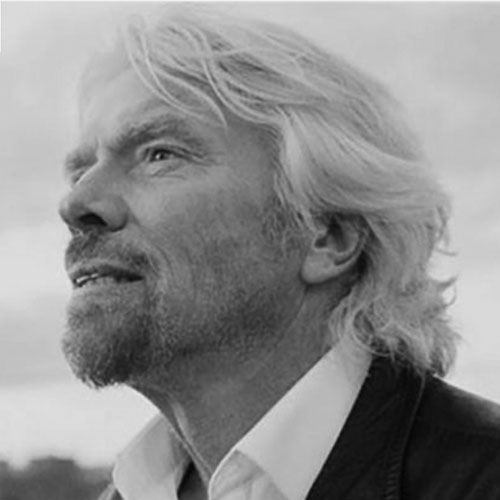Thought leaders share their expert insights on what it takes to retain top talent and make your company a more enjoyable place to work.

Meg Donovan
Chief People Officer, Nexthink

Richard Branson
Founder, Virgin Group

Jenna Mons Anderson
CEO, AccessElite

Frank Wolf
Co-Founder & CSO, Staffbase

Jeremy Beament
Co-Founder & Director, Nudge
Are there any initiatives or upcoming trends in the HR space that you personally support?
Meg Donovan: There is a movement toward humanity in the workplace that I was always a proponent of, and the pandemic really brought this to the forefront. How employers responded to the needs of their employees and how they demonstrated that they cared for their employees’ health and well-being throughout the pandemic mattered. Employees have lots of choice, particularly in the tech landscape, of how they work, where they work, and who they work for — more now than ever before. The proliferation of remote working has opened up a lot of choice for employees to choose a place to work that makes them feel as though they are cared for and valued as a human.
Richard Branson: First and foremost, I believe in flexible working. It is important that employers appreciate their employees’ work-life balance and give them the flexibility to work around their personal lives. We have embraced flexible working since 2013 and allowed our people to work from home or remotely and stagger their working hours if they wish to. We trust our employees to work from wherever and whenever they like as long as they get their work done on time and to a high level.
In what ways can employers/organizations encourage a culture of health and wellness?
MD: For the past two years, we have been engulfed in a health and well-being crisis, both physically and mentally. And while the root cause wasn’t work, it has had a tremendous impact on employers. Creating a healthy work-life balance is crucial today, and it needs to start at the top and be clearly ingrained throughout the entire organization. This means supporting employees through these external events and providing opportunities for flexibility in working hours and offering programs that support stress reduction and bettering mental health.
Jenna Mons Anderson: The key to building an inclusive culture where health and well-being are a priority is doing more than just encouraging it. Organizations need to embody it. They need to understand first where their culture is and what they hope it will become. That culture is always evolving and the people within an organization define it. Employers need to set their people up for success by investing in programs that are comprehensive in nature, data-enabled, and fun.
Why is company culture so important for employee well-being?
JMA: Employees spend more than half their day, in most cases, where they work. The company culture impacts all aspects of their well-being. People want to be supported, inspired, and empowered. They want to wake up in the morning and know their work is valued. A good employee well-being program is diverse and well-aligned with the corporate culture. It needs to offer a variety of options and meet each employee where they are. To do that, organizations need to initiate conversations that are vital to employee well-being.
RB: Too many companies are too keen to put multitudes of rules and regulations on their staff. Not only does this stifle flexibility, but it also suggests a lack of confidence in your team to do their jobs as efficiently and effectively as possible. Give your people freedom to be independent, and your business will reap the rewards. I truly believe that if you take care of your employees, they will take care of your business.
What is one piece of advice you have for company leaders who feel a disconnect with their employees?
Frank Wolf: Company leaders first need to listen carefully and be open to having conversations with their employees in an effort to understand their point of view, questions, and concerns. Only then can leaders frame their employee communications to connect and get the attention and trust of their workforce. Sincere, transparent, authentic, and relevant employee communications that reach every employee is mission critical for leaders who feel a disconnect with their employees. Studies have found that 90 percent of employees desire communication from their organization’s leadership at least once a week. Effective employee communications management helps bridge the gap between a company’s workforce and its leaders, creating direct and meaningful engagement for all concerned.
Where should leaders start when it comes to implementing employee engagement and wellbeing practices into their team’s routine?
Jeremy Beament: Understanding your people and their needs is always the first step. As financial well-being spans all areas of people’s lives, it’s essential to truly understand your employees. This insight, along with clear business objectives like driving employee benefit uptake and creating an inclusive workplace, ensures you can choose a program that is relevant, which in turn will increase uptake. Regardless of what you offer, impartial, personalized education to drive understanding of how to utilize your employee benefits must underpin the program. Only then will employees know how to improve their well-being using the support you offer. Where we see this work most effectively is by being championed from the top — C-suite program advocates can help you create a well-being culture that really makes a difference.
Are there any specific tools or services that organizations are using to overcome some of the impediments they might face in the shift to the employee experience?
FW: Employee experience is the key to creating an environment that encourages employees to be at their best in a workplace where people want to work and succeed. To quote Richard Branson, “There’s no magic formula for creating great company culture. The key is just to treat your staff how you would like to be treated.” I’d like to add that the key is to also treat your staff how you would like your customers to be treated — the Golden Rule for creating an amazing workplace culture. What is abundantly clear is employee experience represents a game-changing transformation in workplace culture that will foster employee loyalty and performance for years to come.
What are some key strategies companies can employ to prevent employee burnout and retain top talent?
JB: Financial stress is a top cause of poor mental health. In fact, 45 percent of people globally feel anxious about their financial situation. It might not always be those that are on lower incomes; many are supporting others on their salary that employers don’t know about. Globally, 35 percent of employers are unaware of who their people are supporting – impartial financial education gives employees the skills and knowledge to reduce stress. We know that 85 percent of financially healthy workers feel more productive at work, ultimately reducing the risk of burnout.
JMA: Make diversity, equity, inclusion, and belonging (DEIB) part of your well-being program. It is so important to align and integrate your well-being and DEIB strategies and programs. A good employee well-being program is diverse and well-aligned with the corporate culture. Your programs should be representative of your employee population from the classes/events offered to content selected and instructors used.

